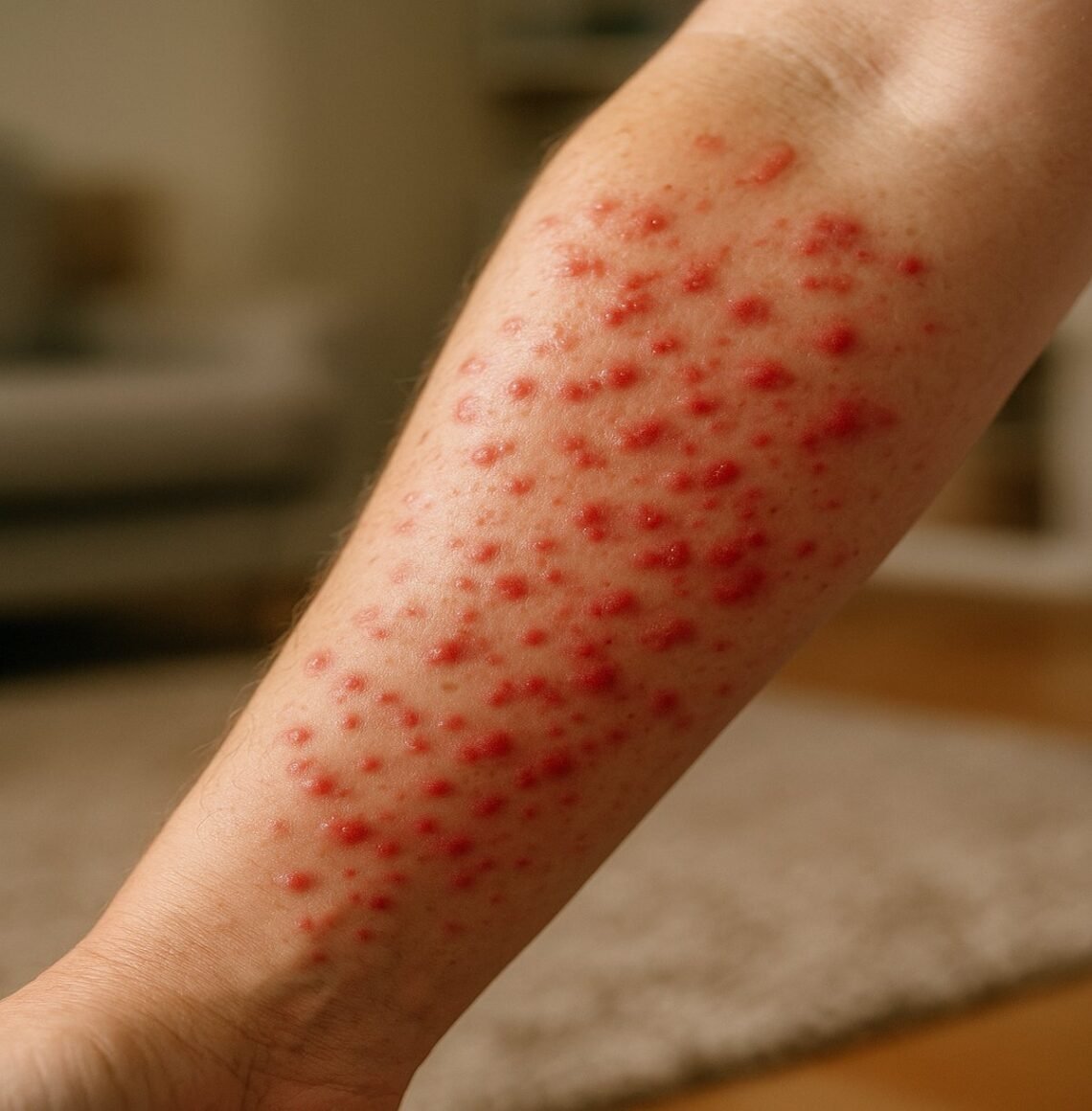Discovering mysterious red, itchy bumps on your skin can be unsettling. While many people immediately suspect bed bugs, another common household pest might be the real culprit: the carpet beetle. However, the term "carpet beetle bites" is a widespread misunderstanding of what is actually happening.
This guide will explore the truth behind these skin reactions. We will cover what carpet beetles are, why they cause irritation, and how to distinguish their effects from actual insect bites. Most importantly, we will provide practical steps for treating the rash and eliminating these pests from your home for good.
The Truth About Carpet Beetle Bites
The first and most important fact to understand is that adult carpet beetles do not bite humans. They are not equipped with mouthparts designed to pierce the skin, nor are they interested in humans as a food source. Adult carpet beetles feed on pollen and nectar from flowers, which is why they are often found near windows trying to get outdoors.
The skin irritation that people mistakenly call carpet beetle bites is actually an allergic reaction. The true source of this discomfort comes from the carpet beetle larvae, not the adult beetles. Understanding this distinction is key to properly addressing the problem.
What Are Carpet Beetles and Their Life Cycle
Carpet beetles are small, oval-shaped insects that are common in homes. The most prevalent types include the varied carpet beetle, the black carpet beetle, and the furniture carpet beetle. Adults are typically only 1/16 to 1/8 of an inch long and may have mottled patterns of white, brown, and yellow, or be solid black.
These pests go through four life stages: egg, larva, pupa, and adult. The larval stage is the most destructive and is the source of skin irritation. The larvae, sometimes called "woolly bears," are about 1/4 inch long, tan or brownish, and covered in dense, hair-like bristles. They spend months feeding on natural fibers in dark, undisturbed areas of a home.
Understanding Carpet Beetle Dermatitis
The itchy rash associated with carpet beetles is a condition known as carpet beetle dermatitis. It is an allergic reaction to the fine bristles and shed skins of the carpet beetle larvae. When these tiny, barbed hairs come into contact with human skin, they can cause a histamine response in sensitive individuals.
This is why not everyone in a household may experience a reaction. One person might develop an itchy rash while another shows no symptoms at all, even with the same level of exposure. This is a significant difference from pests like bed bugs, which bite indiscriminately.
Recognizing Carpet Beetle Rash Symptoms
The symptoms of carpet beetle dermatitis can easily be mistaken for other insect bites. The rash typically appears as small, red, itchy bumps or welts that may form in clusters. In some cases, these can develop into tiny blisters. The irritation often appears on areas of the body that have been in contact with infested materials like clothing, bedding, or furniture.
Unlike bed bug bites, which often appear in linear rows on skin that is exposed during sleep, a carpet beetle rash can be more widespread and random. Furthermore, with a carpet beetle infestation, you will find shed larval skins, but you will not find the small blood spots on your mattress that are characteristic of bed bugs.
How to Identify a Carpet Beetle Infestation
Identifying an infestation is crucial to stopping the allergic reactions. Look for tell-tale signs of carpet beetle larvae in your home. One of the most obvious clues is damage to items made from natural fibers. You may find irregular holes in wool sweaters, silk garments, fur, or feather pillows.
Check for the larvae themselves or their shed skins in dark, quiet places. Common hiding spots include the edges of carpets, inside closets and drawers, under furniture, and in air ducts. Seeing a few adult beetles near windowsills is another strong indicator that larvae may be developing somewhere in your home.
Treating Carpet Beetle Rash and Skin Reactions
To treat the skin irritation from carpet beetle dermatitis, you can use over-the-counter remedies. Anti-itch creams containing hydrocortisone or calamine lotion can help reduce itching and inflammation. Oral antihistamines can also be effective in managing the allergic reaction.
However, these treatments only provide temporary relief. The most important step is to eliminate the source of the irritation by removing the carpet beetle larvae and their debris from your environment. Once the exposure is gone, the rash should clear up within a few days to a week.
Getting Rid of Carpet Beetles from Your Home
Eliminating a carpet beetle infestation requires a thorough approach. Start by vacuuming all carpets, rugs, and upholstered furniture extensively, paying close attention to edges and hidden areas. Immediately dispose of the vacuum bag or empty the canister outside.
Launder all bedding, clothing, and other washable fabrics in hot water. For items that cannot be washed, dry cleaning or placing them in a freezer for two weeks can kill the larvae. For widespread infestations, it is often best to contact a professional pest control service to ensure complete removal and prevent future problems.





